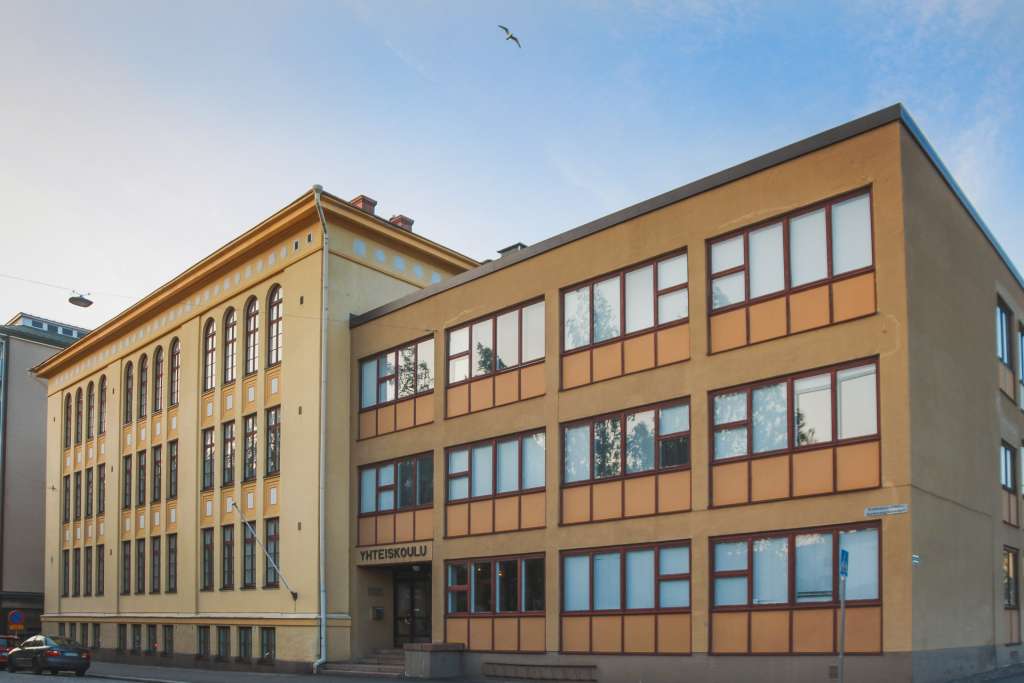
Merenkurkun koulu (Merenkurkku school)
Merenkurkku School is a secondary school (grades 7–9) with around 400 pupils, located in the centre of Vaasa. In addition to general education, the school offers Swedish language immersion education, bilingual Finnish-English education, and flexible basic education (JOPO).
History of the school
The building in which Merenkurkku School operates was originally opened, also back then as a school, in 1928.
The school, originally known as Vaasan Yhteiskoulu (transl. Vaasa Co-Education School), started operating on 1 September 1923 in rented premises on Pitkäkatu. Vaasan yhteiskouluyhdistys (transl. Co-Education School Association) had decided to establish the school because the Finnish-language schools, the Lyceum, and Tyttökoulu (an all-girls school), were unable to accommodate all those who had passed the entrance examinations.
Between 1960 and 1961, a new wing was built. The new premises included, among other things, classrooms and a sports hall.
The secondary school has been known by many names, for example, as Vaasa Co-Education Secondary School, Kasarmintori Secondary School, and Merenkurkku Secondary School. When the names of all schools were nationally coordinated in the 2000s, the school was renamed the present Merenkurkku School.
Language immersion (Swedish)
Since 1997, Merenkurkku School has had a special mission to provide language immersion education in Swedish for secondary school pupils.
Language immersion education aims to develop pupils’ Swedish language skills so that they can cope with various everyday situations in Swedish and actively speak, understand, and produce Swedish.
Swedish is used in part of the common subjects and part of the optional subjects. Around one-third of the school’s pupils are language immersion students.
Bilingual education (English and Finnish)
Bilingual education in English and Finnish is provided in Vaasa at Suvilahti School (grades 1–6) and Merenkurkku School (grades 7–9). In bilingual education, both Finnish and English are taught in parallel.
English-language teaching aims to strengthen the student’s ability to continue to IB or other English-language institutions without excluding the possibility of further studies in Finnish.
Although the teaching is in a foreign language, attention is paid to ensuring that students master the content in their mother tongue.
Flexible basic education JOPO
Flexible basic education aims to strengthen pupils’ motivation to learn and their ability to manage their lives holistically.
In addition to the completion of the basic education curriculum, the aim is to support pupils in their transition to upper secondary education and to equip them to succeed in their studies. Special attention is paid to forms of educational work that strengthen the collaboration between caregivers and school staff.
JOPO studies focus on practical learning. Every school year is divided into face-to-face teaching, work-based learning, camps, and workplace visits. Applications for JOPO are usually made in the spring of the 7th grade. Classes are taught in small groups.
